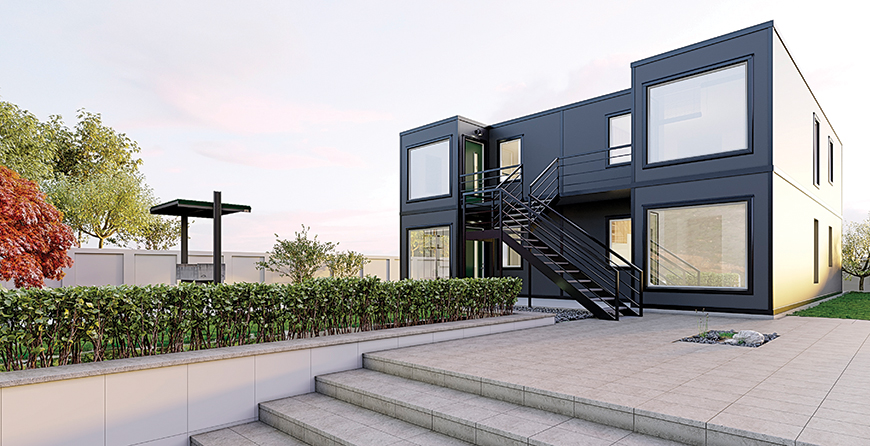A Boise-based company, indieDwell, has revolutionized the building industry by creating homes that are durable, energy efficient, sustainable and affordable using shipping containers. Yes, shipping containers! Employing a process that is both streamlined and clean, indieDwell creates homes that are dignified and beautiful. The timing could not be better for an affordable housing model that sets a new standard for its focus on health, environmental sustainability, economic and community empowerment.
What began as an idea in 2016 quickly became reality when Boise locals, Pete Gombert and Scott Flynn, decided upon shipping containers to launch their vision for an affordable, quality, durable home. Flynn had focused his career on building quality durable homes and believed everyone should be living in one, especially underserved communities. At first, Gombert and Flynn considered using wood frame modular homes but decided on shipping containers “when we saw how the wood frame units defected when moving, which reduced the durability of the home,” explained Gombert in a recent interview. He added, “We determined never to sacrifice four things in the process of building the dwellings: health, durability, energy efficiency, and sustainability. We believe it is part of our social and moral obligation to do better.”
IndieDwell’s innovative and holistic approach to housing is taking off. A diverse group of buyers has emerged, including developers and nonprofit organizations who assist folks in purchasing homes. The modules take 14 days to build in the company’s Caldwell factory and two days to install. The floor plans are standard because “the model is predicated on producing a high number of modules,” said Gombert. Currently, the factory uses shipping containers from Oregon and Salt Lake City and can produce 130 units per year; this includes a single unit home (one shipping container) and a multi-unit home (two shipping containers). Single units cost $78,000 (640 square feet) and multi-unit modules cost $115,000 (960 square feet). All units include an extraordinary list of energy efficient and environmentally sustainable appliances, materials, and components. While indieDwell has yet to complete any larger projects, they are working on a twelve-unit complex in McCall.
Not only does indieDwell create the best possible dwelling for the environment, but they also empower their buyers and occupants. Occupants are taught to factor in the energy efficiency costs of a home when making a purchase, and indieDwell’s units cost $15-$35 per month to run. All materials are high-quality to save occupants unnecessary replacement costs, and the structure is air tight to ensure excellent air quality regulated by an energy recovery ventilator.
IndieDwell’s factory operation also stands out as a model for a human powered company that is committed to “creating a fair, humane, and equitable workplace,” said Gombert. All employees are full-time, year-round employees who receive maternity leave, paid vacation, full health benefits, and a share of the company. They make a point of hiring skilled and unskilled labor. Already, eight states are interested in building factories in their communities.
Looking ahead, indieDwell hopes to develop operation sites across the country to expand their ecosystem of empowerment, well-being, and inclusivity, and to maximize energy efficiency. Sparking interest should not be difficult given that individuals, housing authorities, foundations, and nonprofits across the nation are initiating requests for indieDwell’s model. “Everyone is hungry for an innovative solution to our housing crisis,” said Gombert.
Given what the team has already accomplished, the future is bright for the company. In fact, indieDwell was just named a finalist for the Ivory Prize for Housing Affordability, a nationwide innovation challenge that selects companies making an immediate impact on housing affordability.

